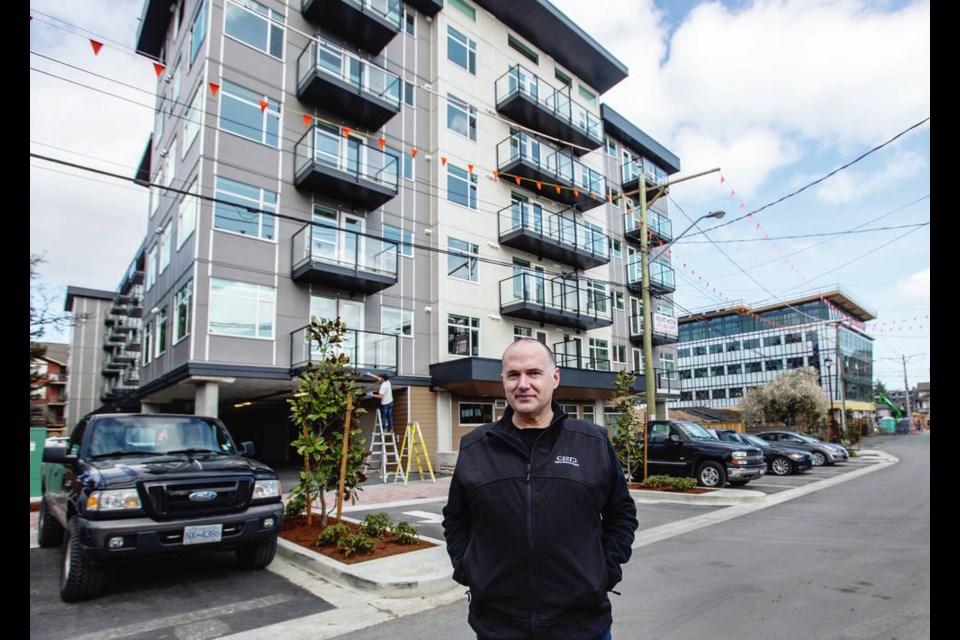Victoria Mayor Lisa Helps and councillors Ben Isitt and Jeremy Loveday were met with a heavy dose of skepticism back in 2015 when they proposed that the Capital Regional District borrow $50 million to build supportive housing for people without homes.
Helps recalled Friday that their “big idea” was mocked by some and discounted by others as unworkable or too costly.
More than five years later, however, their proposal — later scaled back to $30 million — has pried matching money from the federal and provincial governments, and continues to produce results.
On Friday, the CRD’s Regional Housing First Program announced the completion of its latest project — 120 new affordable homes in a six-storey rental building on Hockley Avenue in Langford. The aim of “housing first” is to move at-risk individuals into long-term housing that helps them to recover and intergrate back into society.
Hockley House will have 12 accessible units and 24 that rent at the rock-bottom rate of $375 a month, which is what people on income assistance receive from the province for housing.
The district says tenants will begin moving in next month, a transition that in some cases will free up space in other housing facilities for those who have been camping in parks during the COVID-19 pandemic.
Saanich Coun. Colin Plant, who chairs the CRD board, was quick on Friday to credit Victoria council for championing the program.
“I am very proud of my colleagues at the City of Victoria for having the vision to do this,” he said. “I’m lucky enough to see people who get to move in and talk to them and how happy they are to be able to not couch surf, to be able to have a place where they can have independence and get back on their feet.
“I think that this project is one the rest of Canada should copy. Even though it did take some investment from the local dollars, these are our brothers and sisters and friends and employees who we are supporting.”
Isitt said in an interview Friday that it’s great to see the program delivering results despite the initial reluctance.
“I think the big step at that time was the idea that an equity stake in the project should come from local governments,” he said.
“Our argument was that the status quo wasn’t working on the South Island, and that something was needed to break the logjam. So having local government step up in a way, beyond its traditional role, could serve as a catalyst for the senior levels of government to act.
“And that’s the partnership that’s now unfolded.”
The CRD’s commitment of $30 million to the program — later increased to $40 million — led to matching pledges from the federal and provincial governments for a total investment of $120 million.
That money can be leveraged to produce $600 million worth of rental housing, the district says.
Plant said the goal is to build 2,000 units, including 400, or 20 per cent, that will rent at the provincial assistance rate, while another 31 per cent will be affordable units and 49 per cent will be rented at near-market rates.
In addition to Hockley House, eight other projects are either in progress or complete in Langford, Sooke, View Royal, Victoria and on Salt Spring Island. Nearly $67 million of the initial investment has been allocated to date.
Helps said it’s rewarding to see an idea that was portrayed as “wacky” at the time pay off in housing for people who need it most.
“If we don’t float big ideas, then we’re not going to be able to do big things,” she said. “There are literally hundreds of people now … getting homes because a big idea was pitched. And credit to the CRD staff. They caught it. They said: ‘Oh, let’s see how we can make that work.’
“So ideas are good, staff are great and housing is the result.”



